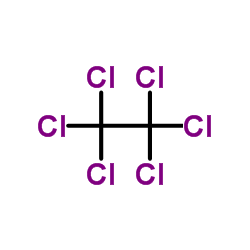The phytotoxic effect of C(1)/C(2)-halocarbons and trichloroacetic acid on the steppe plant Artemisia lerchiana.
Ludwig Weissflog, Gert Krueger, Nikolai Elansky, Erich Putz, Christian A Lange, Lida Lisitzina, Andrea Pfennigsdorff, Karsten Kotte
Index: Chemosphere 65(6) , 975-80, (2006)
Full Text: HTML
Abstract
Artemisia lerchiana is a wormwood species of the Central Asian steppe regions, where it completely cover whole areas. For the first time it was possible to show through field experiments that C(1)/C(2) halocarbons (VCHCs), such as chloroform (CHL), tetrachloroethene (PER) and hexachloroethane (HEX), can be taken up by test plants of the species A. lerchiana via the soil/root pathway and metabolised inter alia into trichloroacetic acid (TCA) under semi-aride conditions. At the same time, chlorophyll a fluorescence measurements carried out on the test plants revealed a phytotoxic influence on plant vitality (max. decline in vitality of 52% with application of CHL) and less efficient energy flows in the photosynthesis mechanism of the A. lerchiana test plants. The authors examine possible links between the simultaneous appearance of VCHCs and additional drought stress in the acceleration of desertification processes.
Related Compounds
| Structure | Name/CAS No. | Molecular Formula | Articles |
|---|---|---|---|
 |
Hexachloroethane
CAS:67-72-1 |
C2Cl6 |
|
Development of QSAR models for predicting hepatocarcinogenic...
2009-09-01 [Eur. J. Med. Chem. 44 , 3658-64, (2009)] |
|
Optimizations of packed sorbent and inlet temperature for la...
2014-08-22 [J. Chromatogr. A. 1356 , 221-9, (2014)] |
|
Carbon and chlorine isotope effects during abiotic reductive...
2007-07-01 [Environ. Sci. Technol. 41(13) , 4662-8, (2007)] |
|
Chemical-induced atrial thrombosis in NTP rodent studies.
2005-01-01 [Toxicol. Pathol. 33(5) , 517-32, (2005)] |
|
Air pollutants formed in thermal decomposition of folpet fun...
2011-01-15 [Environ. Sci. Technol. 45(2) , 554-60, (2011)] |